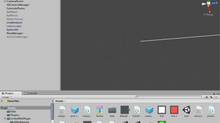Intro To Fab | Final | Spinning Skirt Thing
Getting Started - Planning
I started a little late in the week, and when I went to Servo City's site it said that my order would not reach on time.
I wanted to use a hub and a motor, but since I did not have a hub I decided to use plywood, dowels, and wood glue for this project. So my plan was to fix whatever I would made onto the dowel using wood glue.
After figuring out the logistics, I went to search for inspiration online. An idea that got stuck in my mind was an image of a girl with a skirt, spinning.

Then I sketched a plan of how I want to build the project. It is a deconstructed "girl with a skirt silhouette".

The vertical panels make the skirt
Materials
The list of materials I used:
12" x 24" Craft single-ply plywood, from Blick (I got thinner plywood so that it'd cut easier)
5mm dowel, from Blick
Tin can from The Container Store (left over from previous assignment)
Nylon stand-offs from Tinkersphere
2mm to 5mm shaft coupler from Tinkersphere
DC Toy Motor (size 130) from Adafruit kit
//I forgot to take picture of the materials together
Cutting the parts
I sketched the design on illustrator first. Having the materials at hand really helped because I had all the measurements of the material on hand. My plan on illustrator was built to scale, and I knew how many pieces at each size I needed.

Once I was happy with the design, I put the vectors together with the motor-sandwich-plate template Ben provided.

To the 50W cutter I went, and it executed the job rather seamlessly.

Assembly
First, I assembled the motor-plate sandwich first.

Next, I attached the coupler to the motor shaft. I didn't know that set screws are so small – almost lost one of them.

Assembling the body silhouette was easier than I had expected. Maybe it was because I had precise measurement, maybe it was the way the laser cut; my disks could fit snuggly around the dowel, and they could stay without wood glue at all. It was almost like nuts and bolt.
Before I fixed the dowel into the coupler, I had to fix the motor onto the lid of my tin can. I printed a template for the lid to as a guide for drilling.
For some reason (probably poor drilling technique) the holes' positions were in accurate. And I had a lot of blow-outs, so I decided to make another wood panel to cover the lid.
One thing I learned was that if you have a panel that cover the base material, it would be better to have the holes on the base material slightly bigger.
Using stand-offs, I sandwiched everything together.
Lastly, I added a switch on the tin body.

The Skirt
My initial plan was to use thread to hang the vertical panels. Turned out thread was so hard to work with because the ones from the soft lab are either very thin and flimsy, or bulky and not appealing.
I also had to mind the weight of the panels, because the DC motor is not very strong. My dowel is also quite tall so a weight on top resists the torque of the motor more.
After some experiment I settled with some wires my roommate took from Tandon. It's thick and light enough to hang some panels.

Final Product
It has this junkyard aesthetic to it.
Learnings & What I Would Do Differently
Nylon standoffs are weak. Plywood is weak. Combination of these don't make solid mount for a motor. Metal standoffs and acrylic would probably make a stronger mount.
Never drill-screw nylon bolts. The grooves were blown away and it was really hard to screw the bolt out.
If I had a hub I could be more flexible with the material. I would love to recreate this using thin metal / sheet metal.
Having precision in your illustrator file & cut outs from the laser really made a difference.
Since it's not intuitive to know how strong your motor is, it's always good make tests and slowly add more things to your project.












